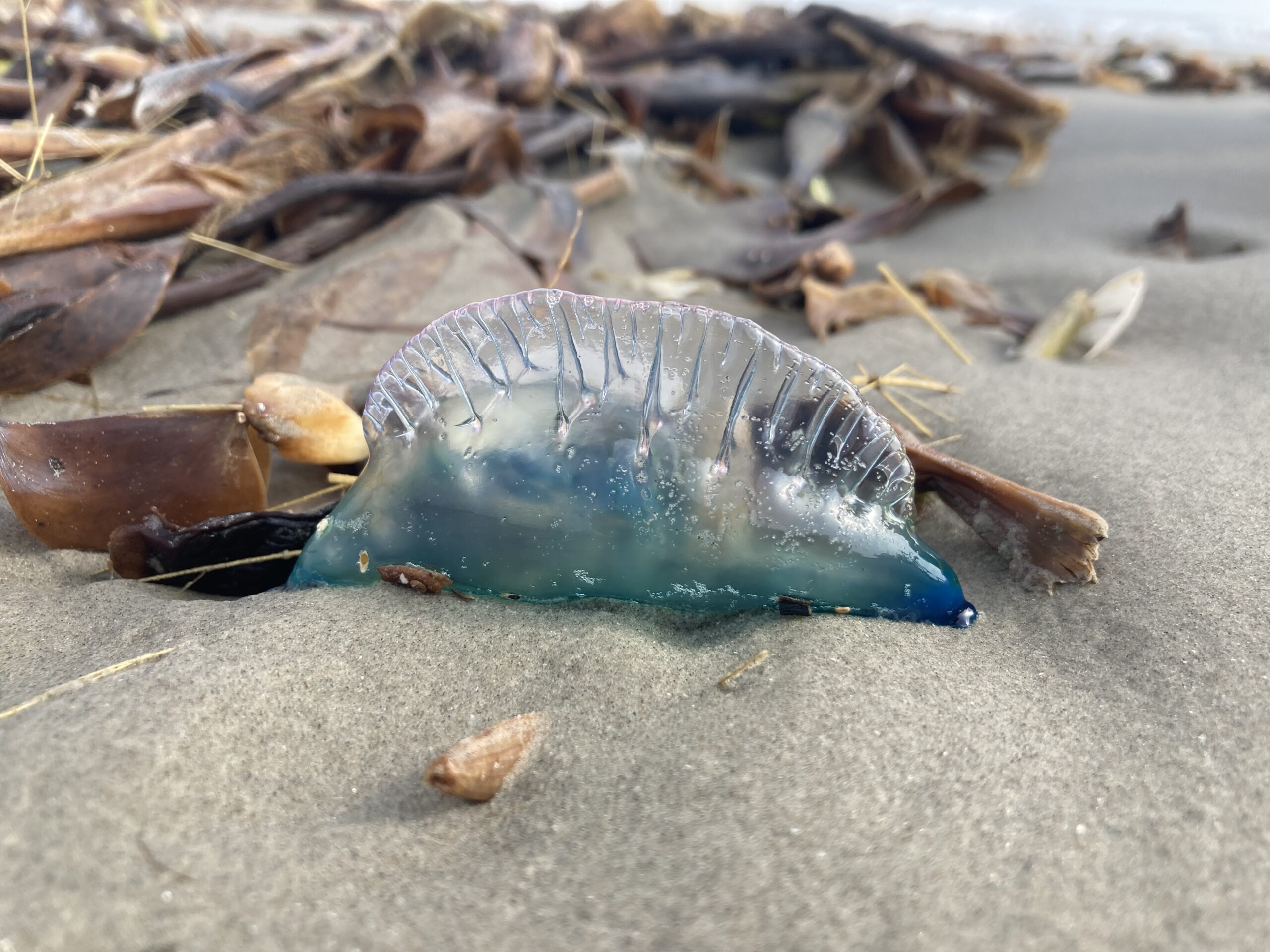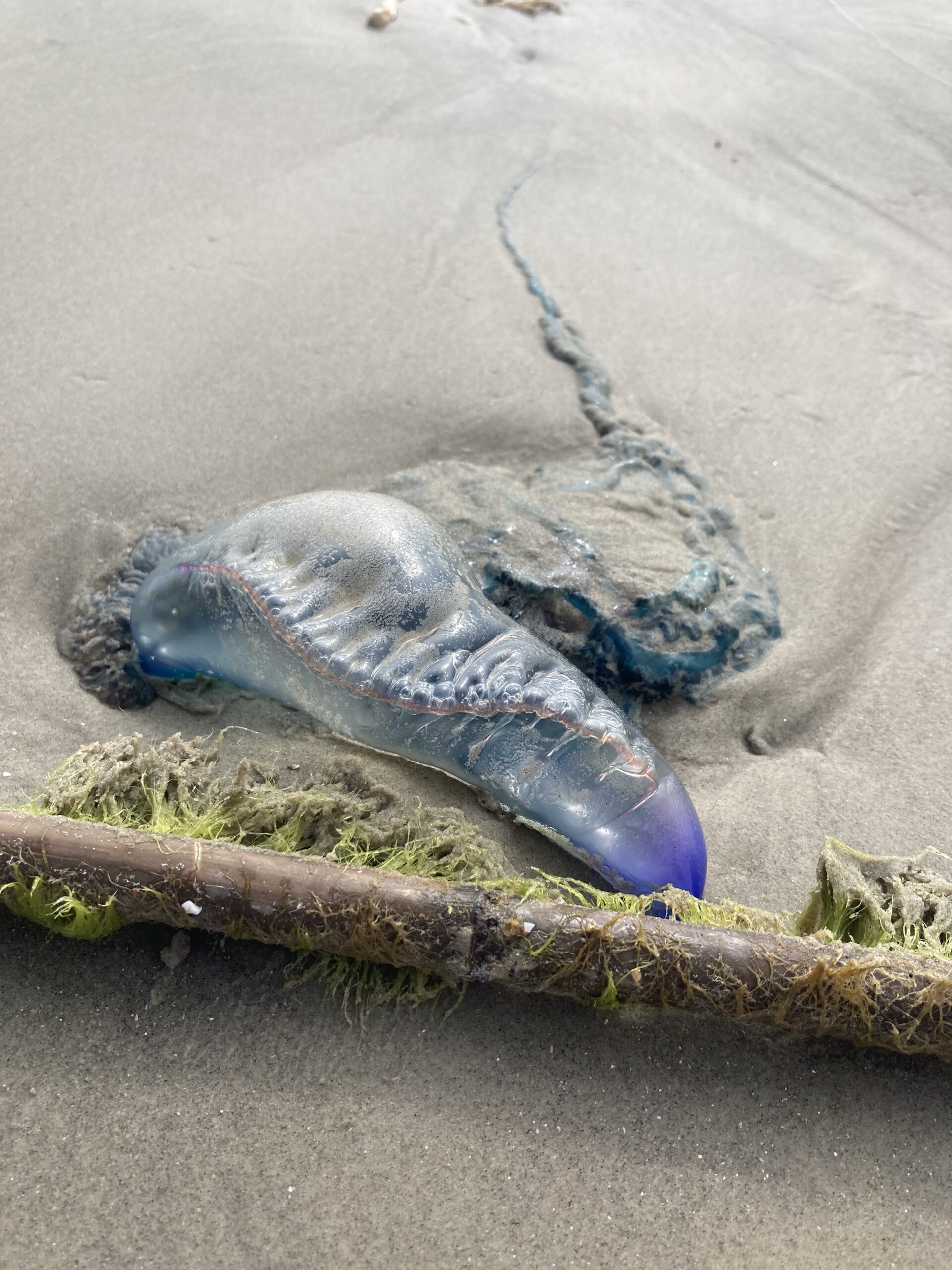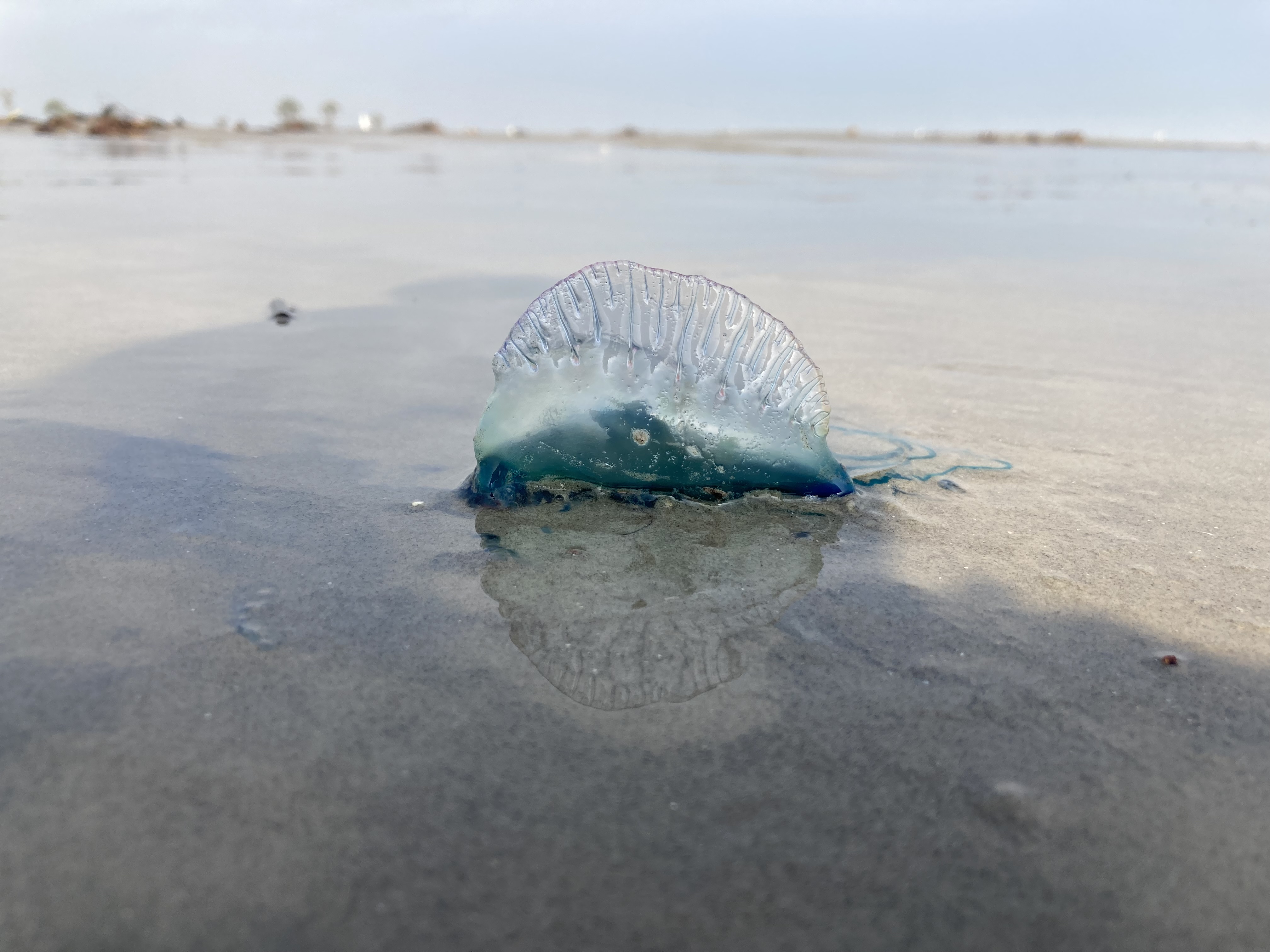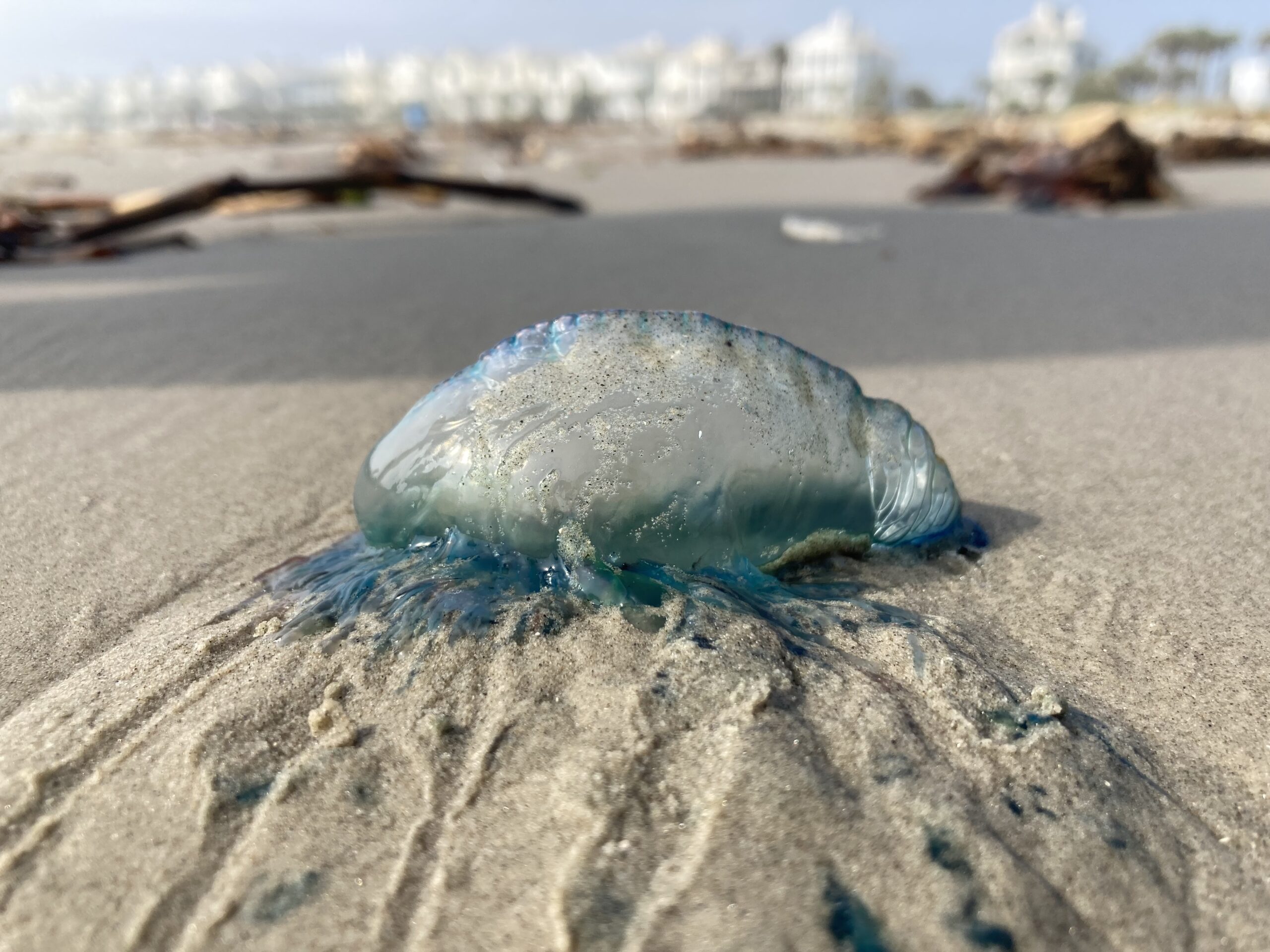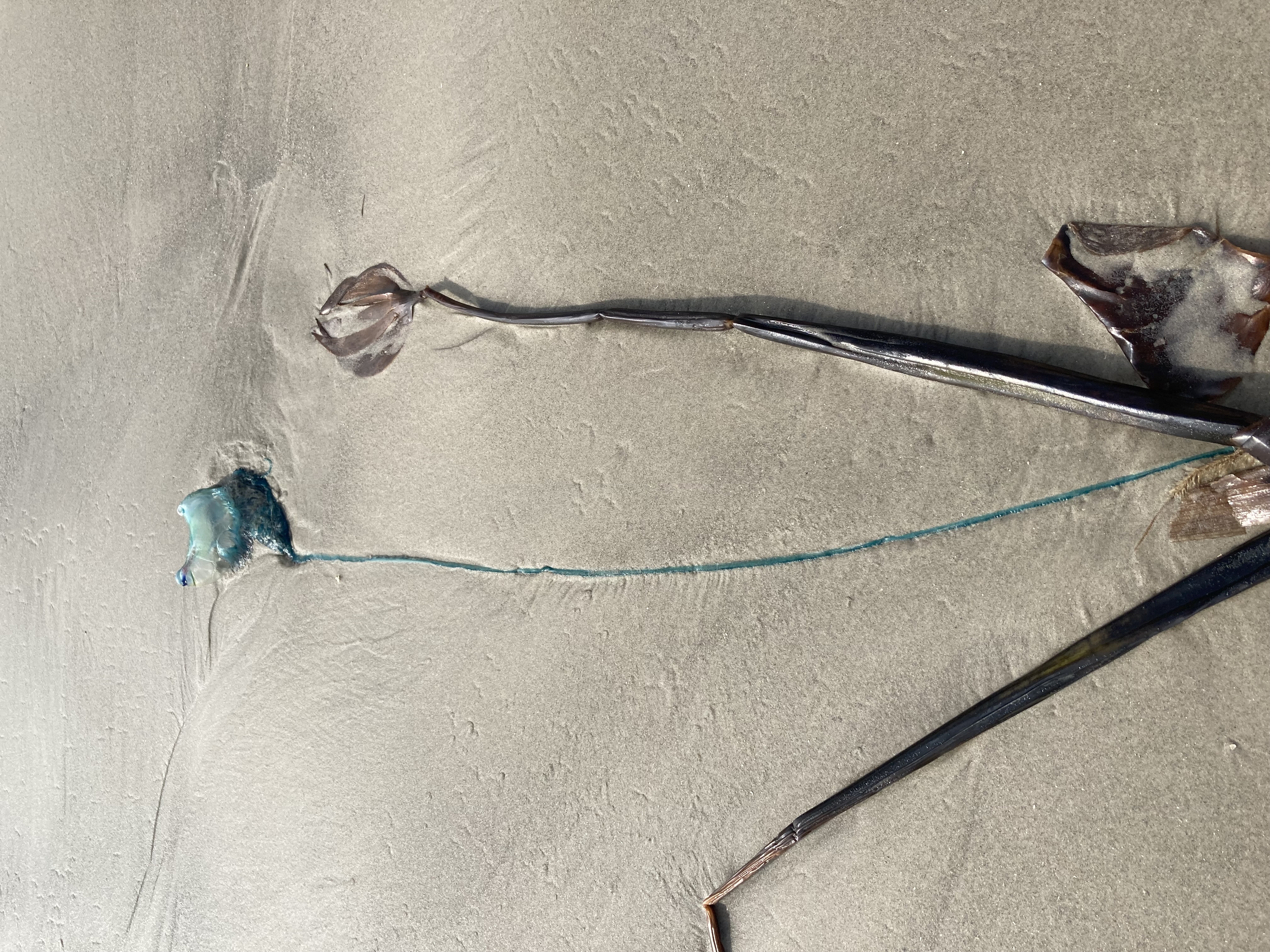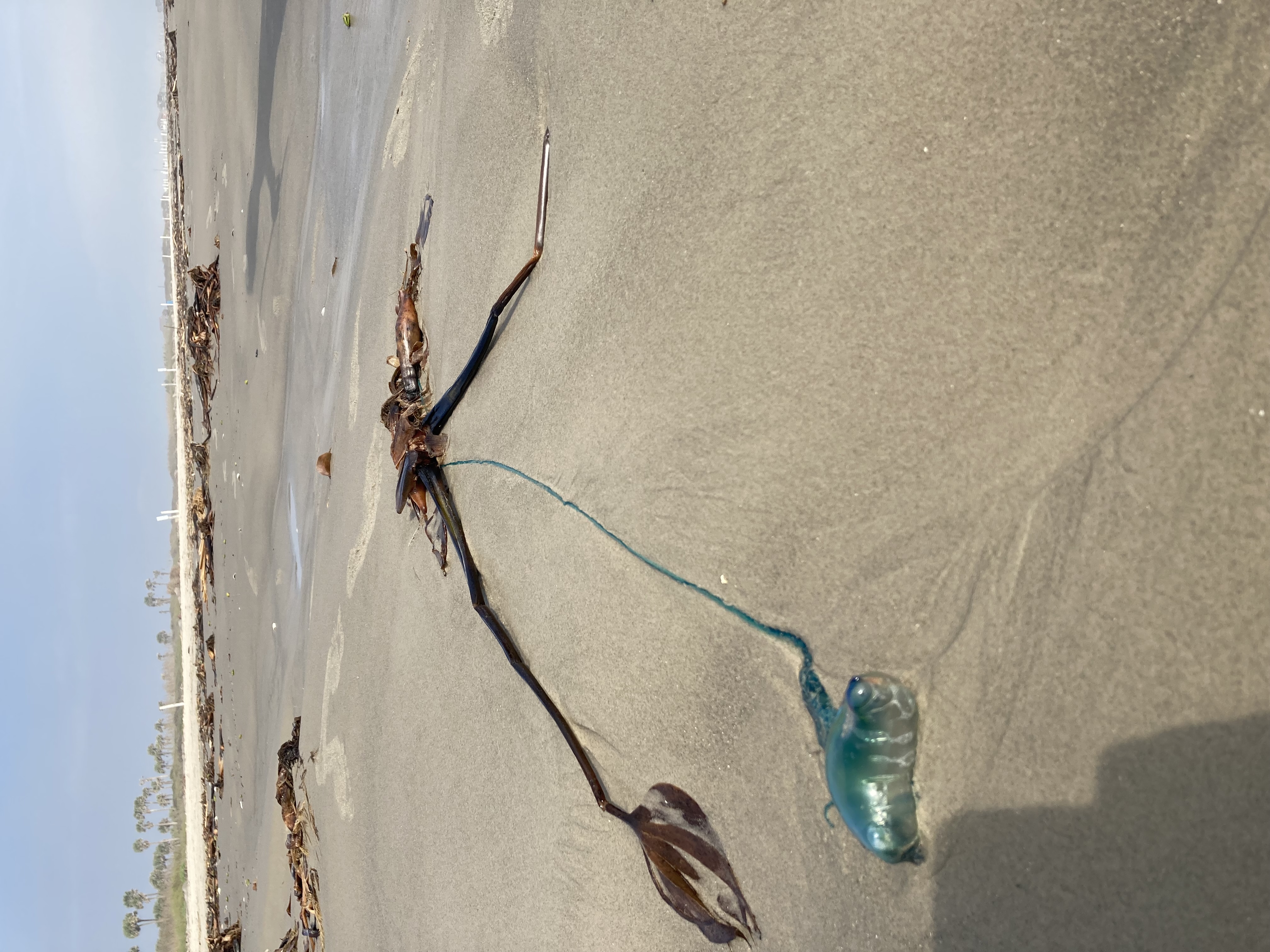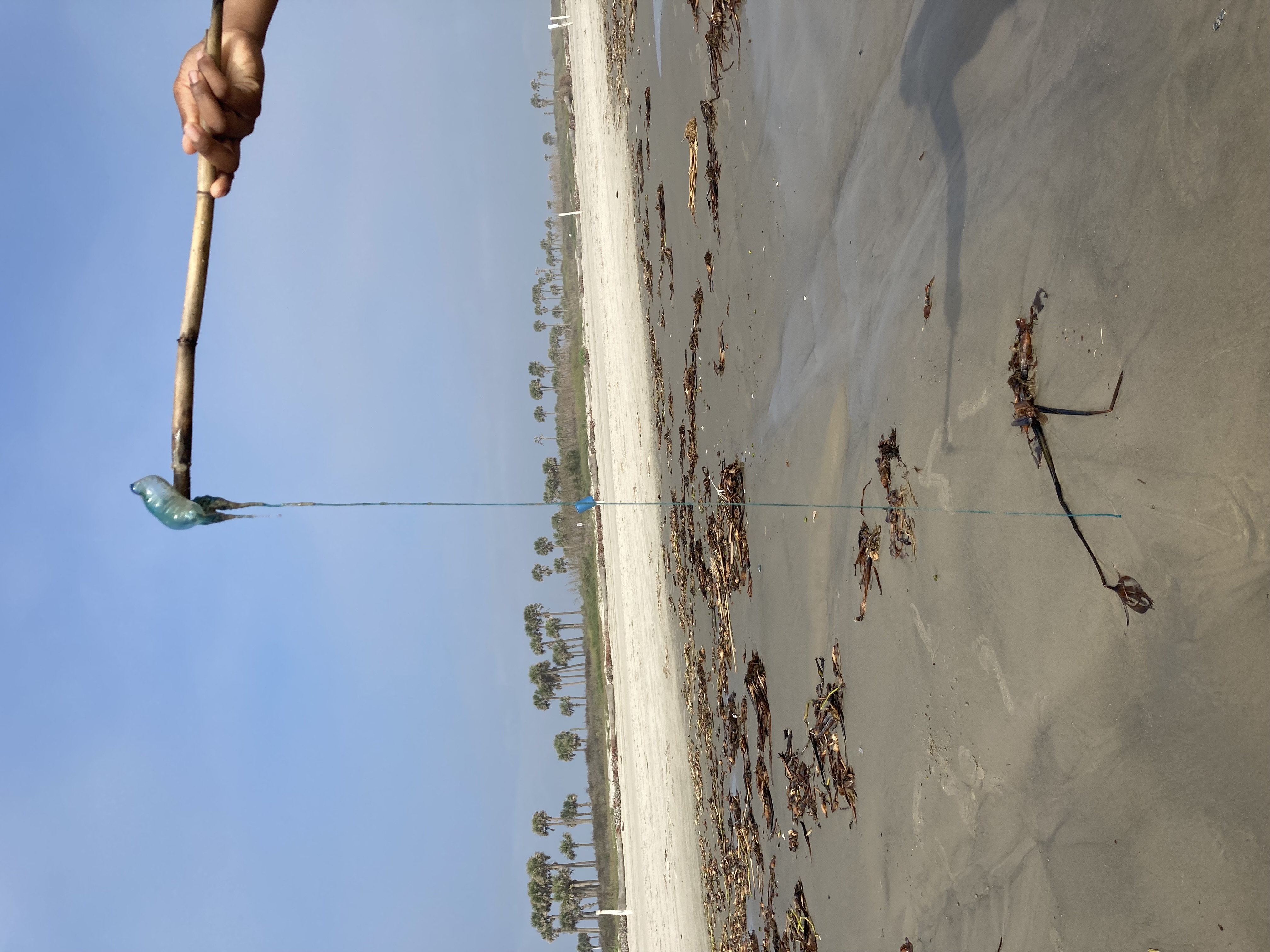Despite its appearance, the Portuguese Man O’ War aka the Bluebottle Jellyfish, is not actually a jellyfish but a venomous siphonophore. It is made up of a small cluster of organisms that each have their own jobs and work together to stay alive.
The man o’ war consists of four different parts called polyps. The first part being the pneumatophore, which is a gas-filled bladder. This bladder is what keeps the man o’ war floating above the surface. The second part of this species is its tentacles, which reach up to 165 feet long. The tentacles are what carry the venom which the bluebottle uses to paralayze and kill its prey, however to humans a sting is usually just accompanied by a lot of pain and swelling. The third polyp contains the digestive organisms and the final polyp consists of the reproductive organisms.
These blue blobs are often seen floating in groups of 1,000 or more in the Indian and Pacific Oceans. They depend on wind and ocean currents to push them around because they have no independent means of propulsion. Often times these organisms are found washed up on shore where they appear to be dead, however, their tentacles are still venomous and can sting even 2 weeks after being out of water.
Fun Facts:
– The man o’ war is named after its resemblence to the 18th century Portuguese warships.
– To avoid threats on the surface they can deflate their air bladders and submerge themeselves temporarily.
– It has few predators due to its venomous tentacles but some of those include the loggerhead sea turtle, sunfish, and “blue dragon” sea slugs.

